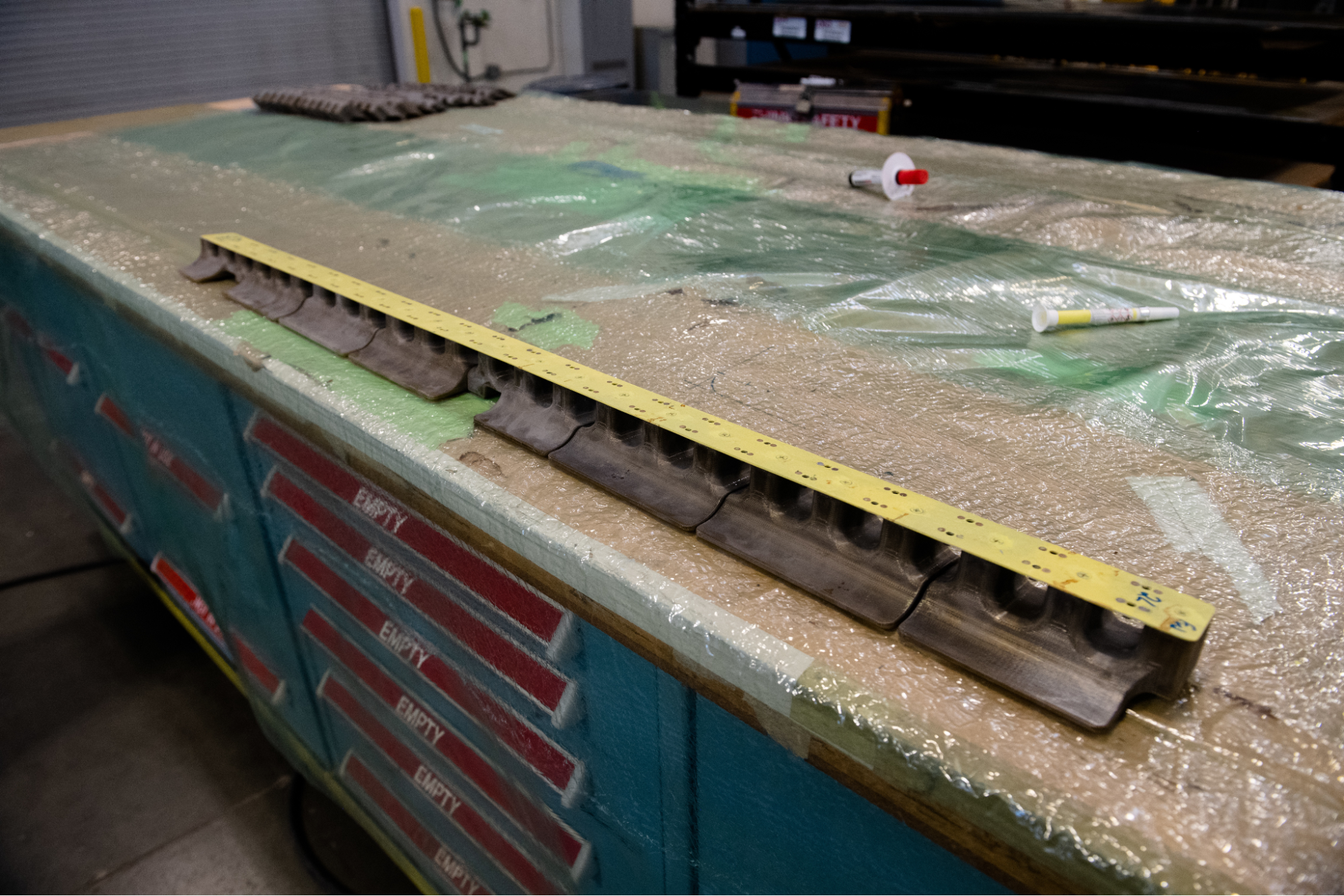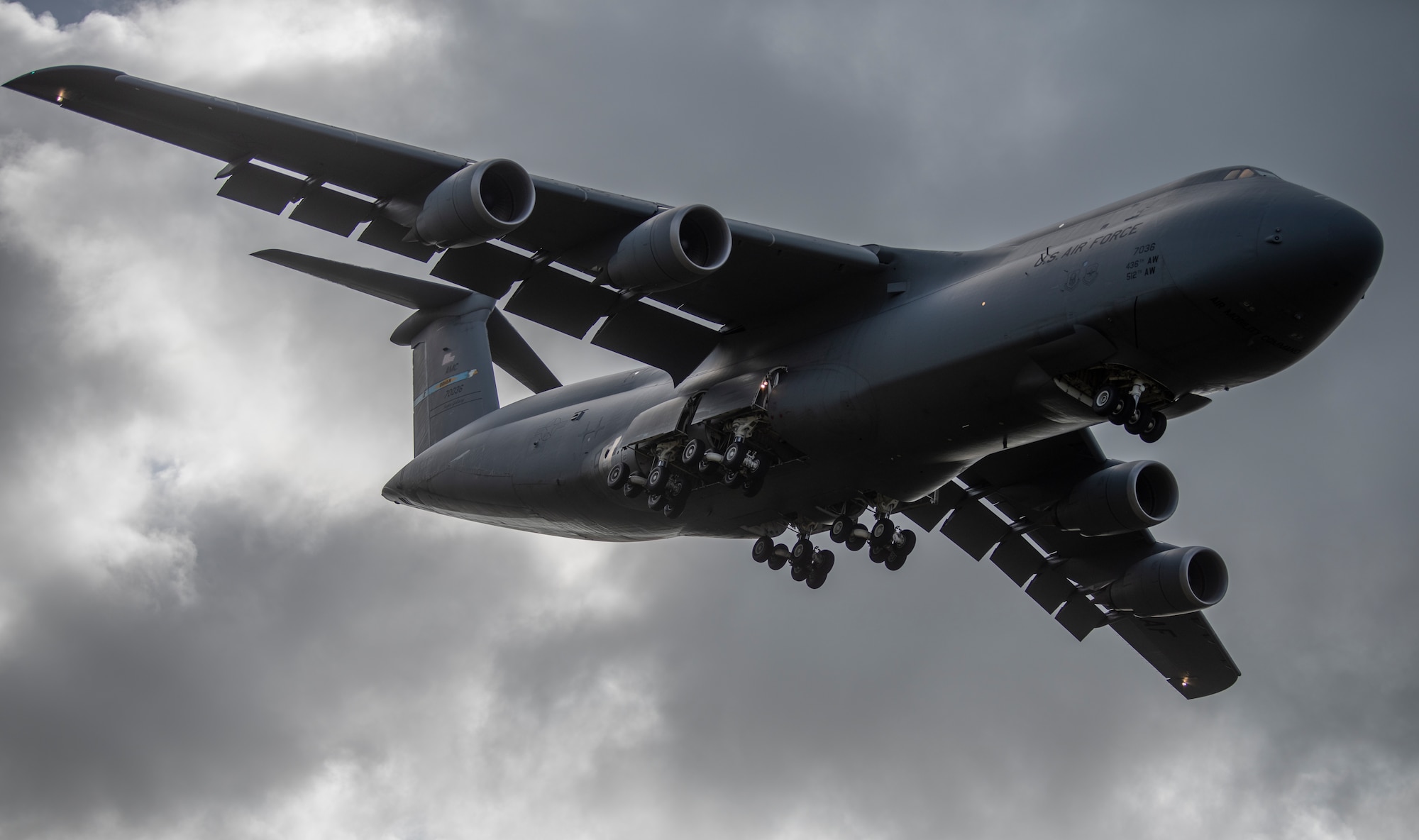The C-5M Super Galaxy, a large American military transport aircraft, has benefited from the addition of 3D printed plastic components after the usual materials were found to be in a state of delamination.
A team of maintainers and contractors from the C-5 System Program Office had discovered that a fairing panel was missing on an aircraft after landing at Charleston AFB.
Upon scrutiny, the crew realised that the support block (made of phenolic resin) had delaminated, resulting in the panel coming loose (and disappearing). In need of a quick fix, it was decided to replace the phenolic blocks with 3D printed Antero 800NA (a PEKK material). With the printed thermoplastic, they were able to repair the internal support for the aerodynamic fairing.
The blocks are internal support structures that provide the underlying shape of the C-5 aerodynamic fairing over the wing splice, the joint where the main wing connects to the middle wing. You can see the printed blocks attached to the strap in the image below.

“The technicians went up on the wing, and that’s when they discovered that there was a massive delamination of the phenolic [blocks],” said Clay Elliott, a C5 structural engineering expert.
“It’s pretty intense work with regard to getting all this stuff off, then getting it clean without causing damage. For what we’re doing, 3D printed Antero seems to be a really solid replacement for phenolic,” Elliott said. “All the aircraft we’ve worked on so far with these improved materials and processes—we’ve haven’t had any issues.”
The printed blocks and wedges were made from the plastic which was supplied by the U.S. Air Force Rapid Sustainment Office. The use of 3D printing in this case has resulted in faster turnaround times and reduced costs for C-5M maintenance and repairs.

It also offers the option for maintenance teams to produce parts on demand, rather than having to source them from third parties. The Antero material has shown promising results and appears to be impervious to natural elements, making it a solid replacement for traditional materials like phenolic.
The integration of 3D printing technology into C-5M maintenance and repair could save thousands of maintenance hours and result in cost savings for the U.S. Air Force.
Come and let us know your thoughts on our Facebook, Twitter, and LinkedIn pages, and don’t forget to sign up for our weekly additive manufacturing newsletter to get all the latest stories delivered right to your inbox.









